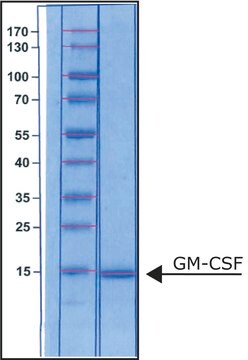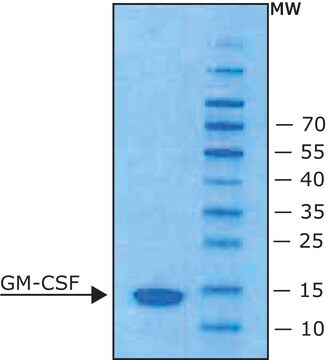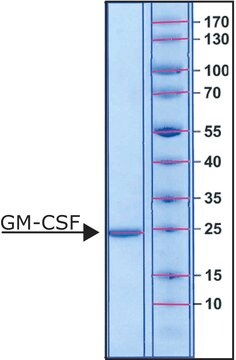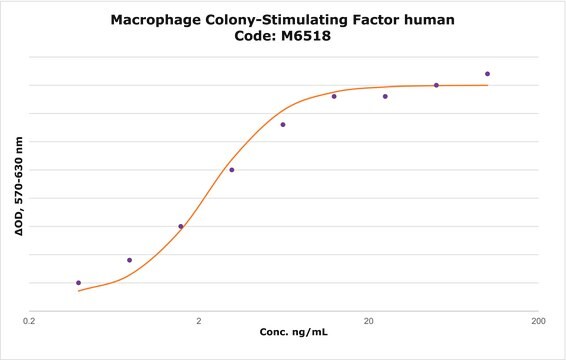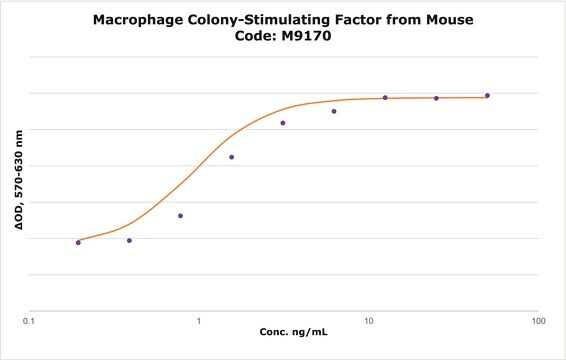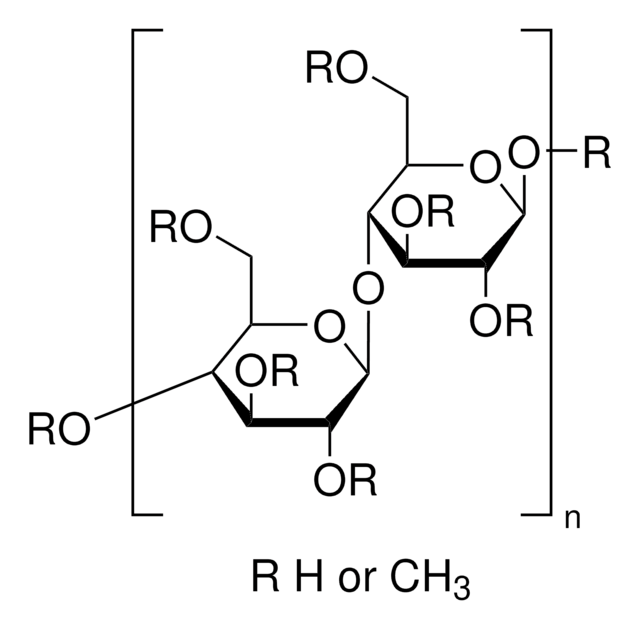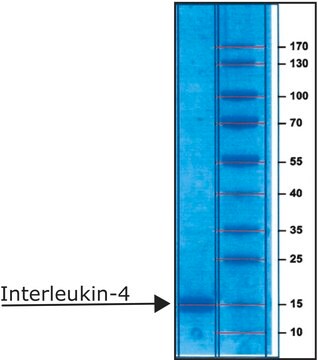G0792
Granulocyte-Macrophage Colony-Stimulating Factor from rat
GM-CSF, recombinant, expressed in E. coli
Synonym(s):
GM-CSF
About This Item
Recommended Products
biological source
rat
Quality Level
recombinant
expressed in E. coli
Assay
>97% (SDS-PAGE)
form
lyophilized powder
potency
0.03-0.1 ng/mL
quality
endotoxin tested
mol wt
14.7 kDa
packaging
pkg of 5X5 μg
pkg of 5 μg
storage condition
avoid repeated freeze/thaw cycles
impurities
<1 EU/μg
UniProt accession no.
storage temp.
−20°C
Gene Information
rat ... CSF2(116630) , Csf2(116630)
Looking for similar products? Visit Product Comparison Guide
Related Categories
Biochem/physiol Actions
Physical form
Preparation Note
Analysis Note
Storage Class Code
11 - Combustible Solids
WGK
WGK 3
Flash Point(F)
Not applicable
Flash Point(C)
Not applicable
Certificates of Analysis (COA)
Search for Certificates of Analysis (COA) by entering the products Lot/Batch Number. Lot and Batch Numbers can be found on a product’s label following the words ‘Lot’ or ‘Batch’.
Already Own This Product?
Find documentation for the products that you have recently purchased in the Document Library.
Our team of scientists has experience in all areas of research including Life Science, Material Science, Chemical Synthesis, Chromatography, Analytical and many others.
Contact Technical Service